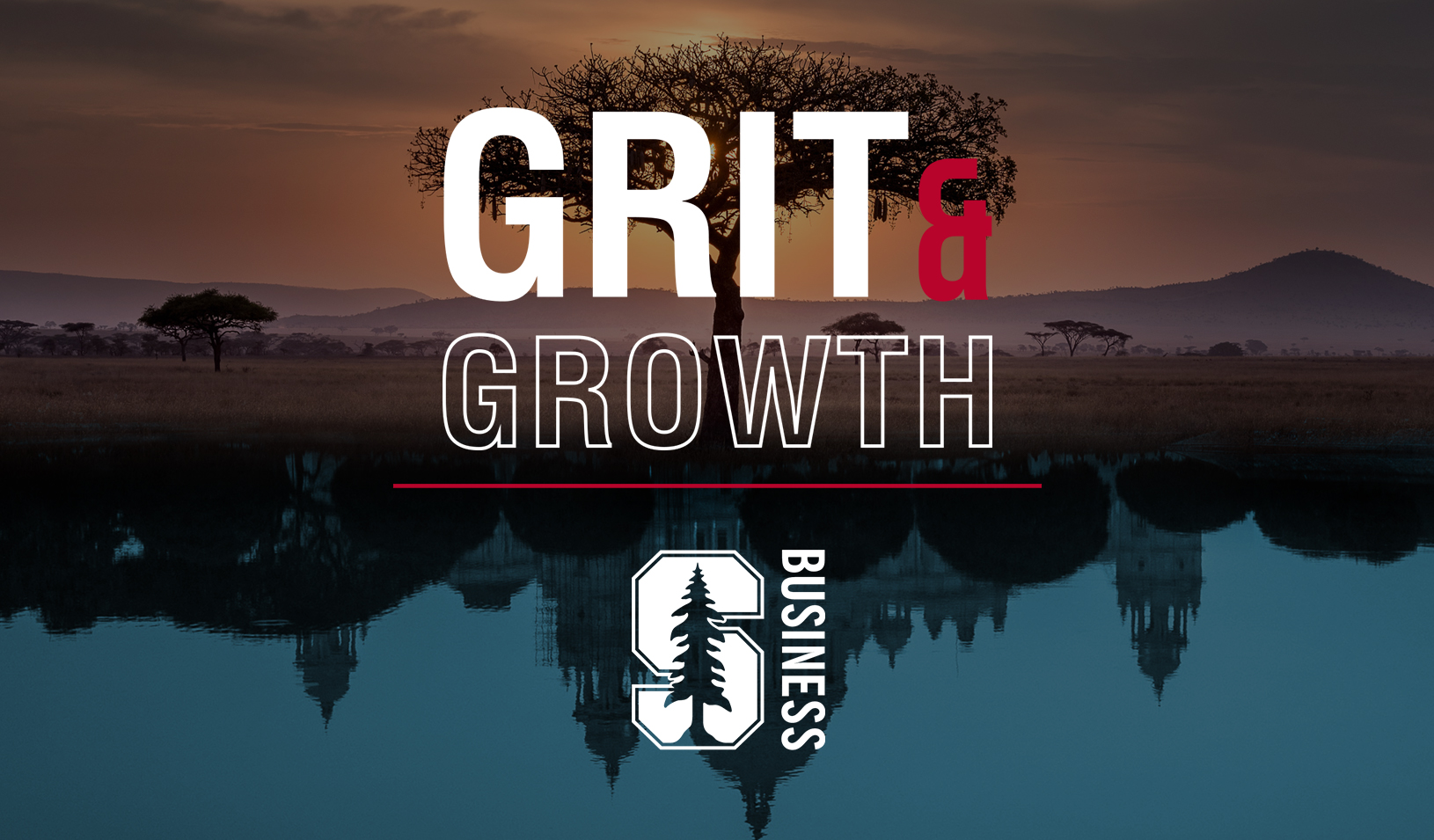From left, Oladoyin Oladapo interviewed Mercado Libre founders Marcos Galperin, Hernan Kazah, and Stelleo Tolda during a recent View From The Top discussion. | Shana Lynch
In 1999, singer Ricky Martin was “Livin’ La Vida Loca,” the Euro had just debuted, and the long-awaited Star Wars Episode 1 premiered. It was also the year that freshly minted Stanford MBAs Marcos Galperin, Hernan Kazah, and Stelleo Tolda launched Mercado Libre, a Latin American online marketplace for e-commerce business and auctions. The business ultimately became the first Latin American company to be listed on the NASDAQ and today is Latin America’s most popular e-commerce site, valued at just under $25 billion.
Back at Stanford for their 20-year reunion, the three cofounders shared their entrepreneurship story and lessons learned in a View From The Top interview with Stanford GSB second-year student Oladoyin Oladapo.
From Library to Launch
“I spent a lot of time in the library, planning the business,” says Galperin, who remains Mercado Libre’s CEO today. “And Stelleo became suspicious because he wasn’t used to seeing me there.” Tolda, today the business’s COO, confirms, “I thought you’re on to something!” Galperin soon convinced Kazah (who currently runs VC fund Kaszek Ventures) to join the fledgling effort too.
From the start, the three focused on team dynamics. “The most important part is to get along very well,” Galperin says. That concept extended to ownership terms, which they thought about carefully, agreeing on the equity split and other provisions. “It was a great chance to really work with my friends,” Tolda adds. “I saw the passion both of them felt for the idea. We all had a sense of purpose and believed technology was changing people’s lives. Those values kept us together for the long term.”
“But we weren’t very innovative,” Kazah says. “At the time there were like 80 other companies throughout Latin America following the same business model. We may have had a great team and long-term vision. But the idea was not unique. Even our friends sometimes got confused about which business was ours.”
One particular competitor group had started at Harvard and soon raised more money than the Stanford entrepreneurs. “Their focus was on marketing and going public very soon,” Kazah says. “Ours was around building organic engines for growth. After the tech bubble burst (in early 2000), the difference became obvious, and we eventually bought them for a fraction of the capital they’d raised.”
Galperin highlights Mercado Libre’s tenacity: “Everyone said this is never going to work in Latin America — no one will buy a product they haven’t touched, not in that culture. But I believed, and just knew we had to build a system that worked well.”
Still, nothing came easy. “After the bubble burst, some of our investors [investment banks] got cold feet and wanted to shut the business down,” Galperin continues. “We had to go to a shareholder vote and almost lost.” Kazah adds, “At one point back then we had something like 10 investors really interested in us and one by one they all dropped out until we were left with nothing. We got through it with persistence and help from the investors already onboard.”
No Easy Market
The founders also talked about the challenges of building a business in Latin America.
“Unfortunately, the stereotypes about that market are true,” Galperin says. “Infrastructure is not as developed. Regulations are backward. Regulators are just trying to optimize for themselves, not the people. It’s a very volatile environment — all of a sudden you have elections and then a new government comes in and changes everything.”
Tolda adds, “All of that, including the tax regimes, unions, and others, requires you to have a lot of patience and resilience. Otherwise, it would be easy and a lot of people would be doing the same thing you are.”
The complex Latin American market requires a thoughtful, customized approach. “Outside companies go in with some idea of how things work in their home market,” Tolda says. “But it’s not necessarily the same. You need to integrate with payment providers in each country there, for example. We did that in 18 countries. Logistics are very local too.”
Kazah offers his current perspective as an investor working with startups: “We invest only in businesses that have what we call local ‘friction points’ — related to payments or logistics or regulation, for example. If you’re a local player and know how to get approval from the central bank, that gives you an edge versus the outside competitor from the U.S. or China that may have a larger fan base or economic capacity.”
Lessons for Entrepreneurs
The founders shared general lessons for those starting companies.
“Overspending early and not focusing on building a great product is the biggest mistake,” Galperin says. “At some points there can be lots of liquidity in emerging markets and people raise a lot of money and spend while trying to figure out the business. I’ve never seen one of those stories succeed. Those that are succeeding are very focused on the product, on the team.”
“Trying to build from a success story helps,” he continues. “Especially in a region not associated with tech or entrepreneurship. Saying ‘Hey, we’re going to be the next Mercado Libre’ is a good thing. That has happened in Israel, for example.”
Kazah emphasizes the importance of perspective and patience: “We’ve always grown very fast but never at 500 or 1,000 percent per year. When eBay was a shareholder in Mercado Libre, they compared our growth with theirs and said they were growing much faster. But we said, ‘This is what we can do today due to infrastructure and internet penetration. But once we reach the penetration population we want, we’ll have a longer growth trajectory.’ People didn’t buy that, but that’s what happened. We haven’t plateaued. You need to be patient and focus on the long run.”
Advice for MBAs
The founders also offered advice to current MBA students, including those at Stanford GSB.
“This is your chance to experiment,” Tolda says. “To go outside your comfort zone and try different classes. But I think the most important thing is to build relationships — that’s why we’re here, telling our story.”
Kazah says, “What I regret from my days at Stanford is that it’s only a 24-hour day. There were so many things to do — to hear speakers and learn from amazing professors and discuss with classmates. So it’s about how to decide what not to do. That’s something you face as a manager and entrepreneur, too.”
“Take risks,” Galperin says in closing. “If you have a contrarian view, just pursue it. But you’ll need to be resilient and long-term focused. You can’t do it alone. You need a great team, and that’s why our Stanford GSB relationships have been so important.”
For media inquiries, visit the Newsroom.






